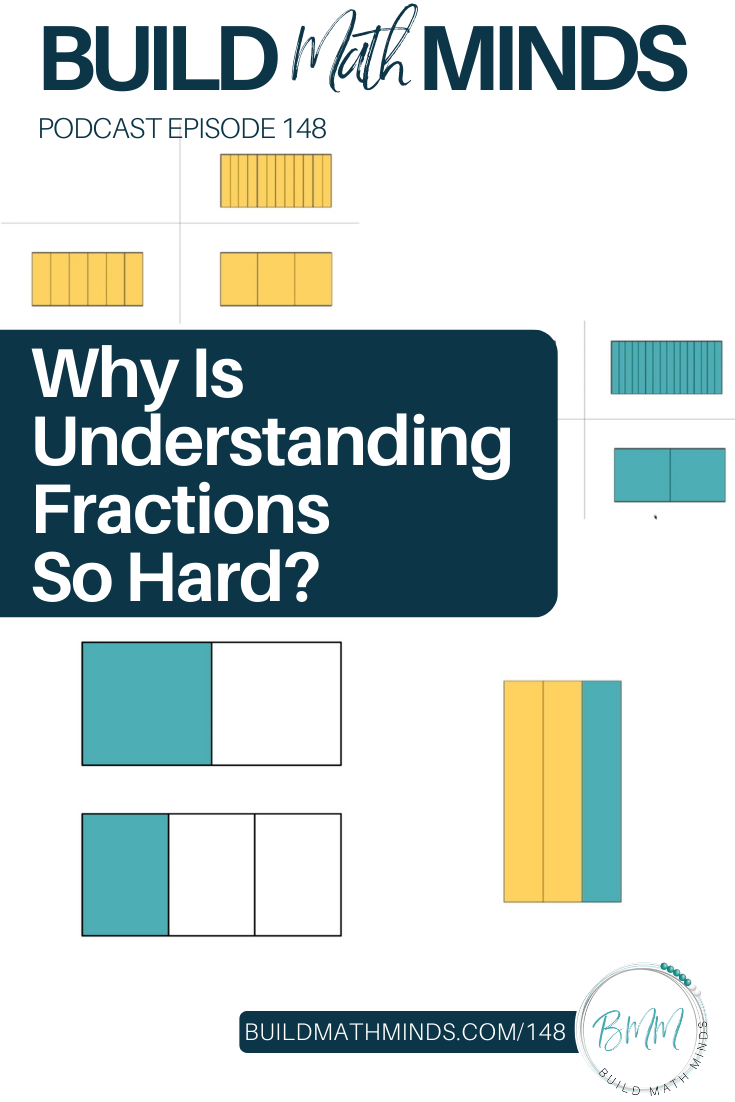Beyond Pizzas & Pies, Grades 3-5: 10 Essential Strategies for Supporting Fraction Sense by Julie McNamara and Meghan M. Shaughnessy
Welcome fellow Recovering Traditionalists to Episode 148. Today we are looking at one answer to the question Why Is Understanding Fractions So Hard?
Fractions are often not a favorite math concept for kids or adults. But it is my belief that it’s because textbooks didn’t give us an opportunity to actually build Fraction Sense. Instead we were just told the rules and procedures for operating with fractions.
That’s why we have common phrases like “Ours is not to question WHY, just invert and multiply!” and bumper stickers like 5 out of 4 people are bad at math.
To many of us, fractions are just two numbers slapped together with a line between them.
We never got to fully develop an understanding of them as numbers. In the book Beyond Pizzas & Pies, Grades 3-5: 10 Essential Strategies for Supporting Fraction Sense by Julie McNamara and Meghan M. Shaughnessy they start the book off on pages xviii and xix with the heading “Why Is Understanding Fractions So Hard?” and here is what they write:
“Helping students develop a deep and flexible understanding of fractions is a complex endeavor. In order for students to understand fractions and fraction notation, they must be able to think about numbers in a different way than when they are working with whole numbers. For example, instead of viewing a number such as 34 as representing a specific quantity, when the same digits (3 and 4) are used in the number ¾, the digits 3 and 4 represent a relationship. In addition, students need to consider the context in which the number ¾ occurs. While the relationship between the numerator 3 and the denominator 4 doesn’t change across contexts, the way the fraction is represented does.
When considering ¾ as a number, the 3 represents three one-fourths, and the whole, or unit, is one.
When considering ¾ as part of an area, the 3 represents three replications of the area that is one-fourth of the whole.
When ¾ is considered as a measure, the 3 is three iterations of the distance that is one-fourth of the whole.
When ¾ is considered as part of a set, the 3 could mean three items, six items, twenty-four items, and so on, depending on the size of the entire set.”
Now along with each of those examples are visual images showing the different contexts of ¾, but because this podcast is all audio I’m just sharing the explanation.
Think about all those different contexts and meanings for fractions. When kids are dealing with whole numbers, a 2 just means 2. It’s very straightforward and easy to visualize, but ⅖ isn’t as easy.
If you teach fractions, or even if you want to better understand fractions for yourself, I recommend getting the book but I also have two free resources for you. Over on my vlog TheRecoveringTraditionalist.com I just put out a video about How to Build Fraction Sense. So if you are wanting to better understand fractions, go watch that video.
One of the 8 number sense concepts we need to build around fractions is Subitizing. So underneath the video is a spot you can request my free Fraction Subitizing Cards. I’ll link to the video and the book on the show notes page buildmathminds.com/148.
Until next week my Fellow Recovering Traditionalists, keep Building Math Minds.
These episodes are sponsored by the online trainings that I do for elementary educators. Registration for The Flexibility Formula K-2 and 3rd-5th is now open. These courses help you understand the foundation of number sense, how number sense builds kids’ flexibility with numbers, and how that impacts their ability to become fluent with the mathematics at your grade level. Go to buildmathminds.com/enroll to learn more about each course and get enrolled.





Love it! Can I request the fraction subitizing cards please?
sahmed@sonoranschools.org
Takes the fear out of fraction